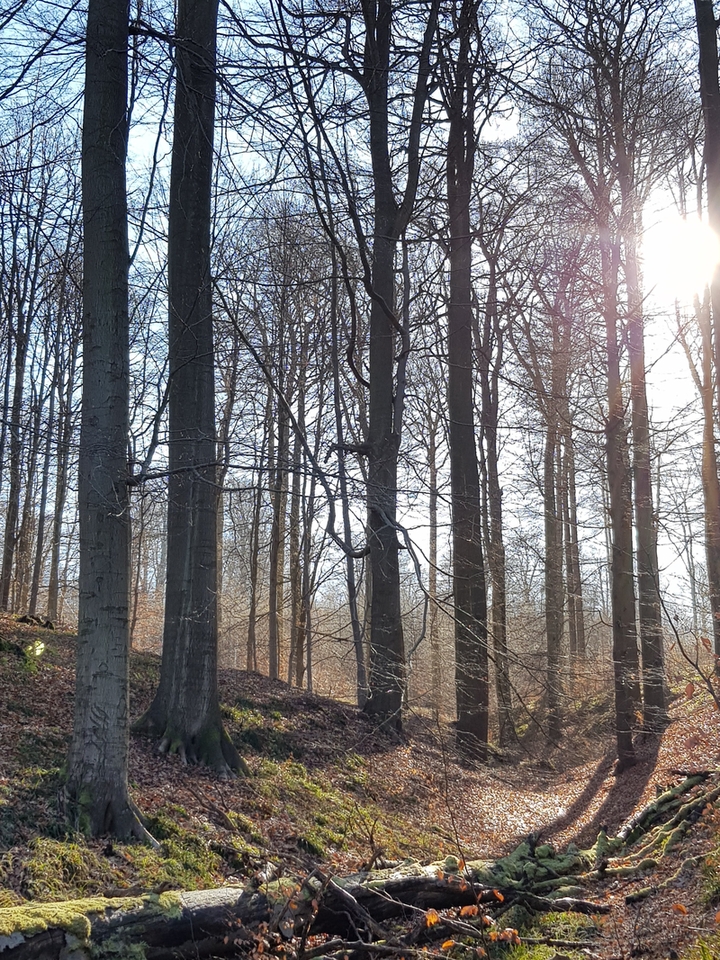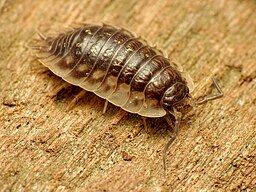[Science News] - FOURCAST in the spotlight: the impact of warm cities and cool forests
After the herbarium research, we would like to highlight a second FOURCAST sub-research: the mesocosm experiment led by Ghent University, with Meise Botanic Garden, the RMI and the Royal Belgian Institute of Natural Sciences (KBIN) as partners.
This experiment investigates the heat island effect in Brussels. Scientists monitor the growth of plants and woodlice at various locations, from the city center to the Sonian Forest.
Simulate nature
 A mesocosm is a controlled outdoor system in which natural conditions are simulated. Pieter De Frenne, professor of botany at Ghent University: “In this case it concerns open Curver boxes measuring 30 by 40 centimeters with a depth of 30 centimeters. They are plastic boxes with a membrane at the bottom with soil or potting soil on top. The membrane is water-permeable, but prevents the roots of the plants from growing outside the box. In the mesocosm there is a smaller cage in which the woodlice live. Otherwise they would quickly crawl out of the box.”
A mesocosm is a controlled outdoor system in which natural conditions are simulated. Pieter De Frenne, professor of botany at Ghent University: “In this case it concerns open Curver boxes measuring 30 by 40 centimeters with a depth of 30 centimeters. They are plastic boxes with a membrane at the bottom with soil or potting soil on top. The membrane is water-permeable, but prevents the roots of the plants from growing outside the box. In the mesocosm there is a smaller cage in which the woodlice live. Otherwise they would quickly crawl out of the box.”
Methodology
The identical setups are placed at 20 locations in Brussels with more or less vegetation. This goes from the center of Brussels, at a location where there are no plants within a radius of 50 meters, over a street with a few trees, a city garden, a small park, a large park such as Bois de la Cambre, etc. to the Sonian Forest. By working with boxes, the soil variation has no influence on the experiment: it is purely about the microclimate.
Each box contains ten plant species and four species of woodlice. “We select species that like warmth as well as species that thrive better in cool forests,” says Pieter. “Some plants, such as wood sorrel, wood anemone and Solomon's seal, only grow in old, healthy forests. Other plants, such as nettles and blackberries, prefer a warmer environment with more light.”
 There are also species among woodlice that are associated with old forests. Other, more generalist species live in common gardens. The choice of woodlice was not accidental, because they play an important role in forests: they eat the dead leaves and thus recycle nutrients and carbon. In this way they largely determine the carbon cycle of forests. “There is a second good reason to choose woodlice,” Pieter explains. “They are crustaceans. So they were once aquatic animals that adapted to live on land. As a result, temperature and humidity have a strong influence on their occurrence and population growth. Woodlice respond very quickly to drought, heat waves and warming and are therefore an interesting indicator for the impact of climate change.”
There are also species among woodlice that are associated with old forests. Other, more generalist species live in common gardens. The choice of woodlice was not accidental, because they play an important role in forests: they eat the dead leaves and thus recycle nutrients and carbon. In this way they largely determine the carbon cycle of forests. “There is a second good reason to choose woodlice,” Pieter explains. “They are crustaceans. So they were once aquatic animals that adapted to live on land. As a result, temperature and humidity have a strong influence on their occurrence and population growth. Woodlice respond very quickly to drought, heat waves and warming and are therefore an interesting indicator for the impact of climate change.”
Project partners lend a helping hand
Meise Botanic Garden provides seeds from the seed bank. Filip Vandelook, director of research at Meise Botanical Garden: “We will first grow the plants for the experiment, because seeds are quite fickle. Once we get past the germination phase, things become more predictable. We select young plants of the same size. During the experiment, we carry out measurements on the mesocosms together with the other partners. We monitor when the plants bloom, when they get seeds…”
The RMI will install weather stations at 10 of the 20 locations. In this way, the influence of the climate, the heat island effect and green buffer zones can be closely monitored. The RBINS is the fourth partner involved in this sub-research. Specialized entomologists monitor the woodlice.
“We are now in the preparation phase,” says Pieter. “We are looking for locations for the boxes and are writing up the protocol for the experiment. We grow the plants in the winter so that we can place the mesocosms in May. We will follow this up until the end of 2025.”
Quantifying the importance of plants in the city
The aim of the experiment is to gain more insight into the impact of the heat island effect on biodiversity, and into the buffering effect of vegetation in the city. “We want to use this knowledge to make policy proposals. For example, urban planning can be improved: nursing homes, hospitals, childcare, schools, etc. benefit from the cooling that nature can provide. We also want to protect biodiversity against heat waves, so that ecosystem services such as cooling or carbon storage continue to function properly.”
“We expect that species that prefer warmth will continue to do well in the city, while species that do better in a cool and moist environment will be suppressed or even disappear altogether. We are really going to quantify the impact of vegetation” Pieter concludes. “For example, we can determine what percentage of vegetation is needed to limit the negative impact of global warming.”



